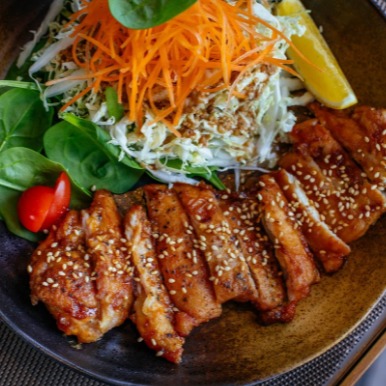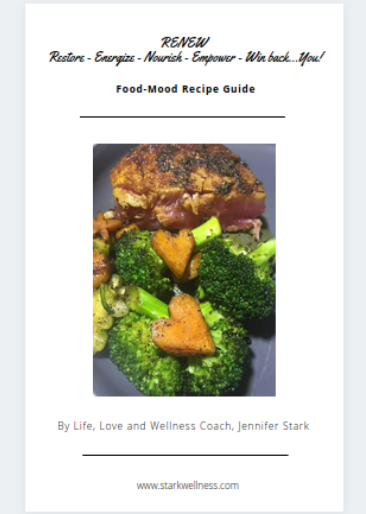What is Mindful Eating?
Many of us lead fast-paced lives. We’re busy thinking about yesterday or planning for tomorrow and likely not paying a lot of attention to the present.
Sound familiar?
The practice of mindfulness is simply an invitation to step out of the chaos in your mind and hone in on what you are sensing and feeling in the moment without judgment. This practice has helped many to live more intentionally and develop the skills necessary to manage and cope with their physical and mental health.
Mindfulness encompasses two key ingredients: awareness and acceptance. Awareness is the knowledge and ability to focus attention on one’s inner processes and experiences, such as the experience of the present moment. Acceptance is the ability to observe and accept—rather than judge or avoid—those streams of thought. —Psychology Today
Recently, mindfulness has gained attention as an approach to eating and is referred to as mindful eating.
In essence, mindful eating is the act of being present and attentive to our food and eating experience, without judgment. This approach aims to transform our relationship with food by becoming more attuned to our bodies during the eating process.

What are the Benefits of Mindful Eating?
Mindful eating has been shown to have many benefits, including:
- slowing down and taking a break from the daily grind
- taking more pleasure from the food you eat
- choosing foods that make you feel good after eating, both mentally and physically
- improving your digestion by eating slower and chewing more thoroughly
- exploring your physical or psychological reasons for eating
- recognizing your hunger and fullness cues
- making a greater connection to where your food comes from and how it gets to your table
It is not coincidental that, within a mindful approach, the person’s choices often are to eat less, savor eating more, and select foods consistent with desirable health benefits. —Joseph B. Nelson, NIH
What Does Mindful Eating Look Like in Practice?
Mindful eating can take many forms and may take some time and practice to come naturally. Listed below are 10 simple practices that you can start putting into place today. Start with one idea and gradually incorporate more.
10 Ways to Practice Mindful Eating:
1. Understand your motivations. How are you feeling before you eat? Are you responding to your body’s physical needs; or are you eating out of boredom, comforting an emotional yearning, satisfying a different desire? No judgement, just awareness.
2. Eliminate distractions. Instead of eating on the go, in front of the computer or television, or while scrolling through social media clips, sit at a table in a quiet and peaceful environment. Allow your attention to settle on your meal and your eating experience.
3. Express appreciation and gratitude. Take a deep breath and reflect on everything and everyone involved in the process of bringing your meal to the table. Silently express your gratitude for the opportunity to enjoy a delicious meal, whether it be on your own, or in the company of others.
4. Take small bites. It’s easier to taste, chew, and experience the textures of your food when your mouth is not completely full.
5. Chew thoroughly. Take the time to chew your food well (20 or more chews, depending on the food). As a bonus, this could also help improve digestion.
6. Eat slowly. Put your utensils down between bites and don’t pick them up again until you have swallowed. You might think this will be a challenge with lunch at work, but I bet you’ll only take a couple extra minutes.
7. Engage your senses. Direct your attention to the taste, texture, shape, aroma, and sound of your food. Try to identify the different ingredients and flavors in your meal; focus on how the food feels in your mouth; notice the shapes, colors and textures on your plate; savour the scents wafting in the air; listen to the sounds that arise as you chew (think: stress-relieving crunchy carrots).
8. Acknowledge your wandering mind. Recognize when your mind drifts, and then non-judgemetnally bring your attention back to your eating experience. Reengage your senses or tune back in with another strategy from this list.
9. Learn to recognize your hunger cues. Pause in the middle of your meal and ask yourself: Does this food still taste good? Is eating it still pleasurable? What is my current fullness level? Sometimes you may feel full before the food on your plate is gone. Don’t feel the need to finish what’s on your plate if your body doesn’t need it. When you’re a guest, don’t ask for seconds if you don’t want more—find a more appropriate way to show how much you loved the meal.
10. Practice, practice, practice. As you become more practiced and hone your attention skills, mindful eating will become more natural. You will learn to eat mindfully in a variety of settings, alone, and with others.
By paying close attention to how you feel before, during, and after eating—your emotional state, your hunger and fullness levels, the textures and tastes of each mouthful—you will become more in-tune with your body and empowered to make food choices that bring you both pleasure and nourishment.
Your mind and body will thank you.
Want some tools to help you practice mindful eating? In my 4 week email course, RENEW, you’ll get access to my Food-Mood Journal and Food-Mood Recipe Guide, plus a whole lot more! Click the button below to find out more.

Hi! I’m Jennifer, your life, love and wellness coach! I help men, women and couples figure out what’s keeping them from being happy and healthy so they can overcome those blocks and determine and implement steps to truly improve their lives, relationships, and physical and mental health. I’m a certified Professional Life Coach and Holistic Health Coach with a background in professional counseling. I’m ready to help you. jennifer@starkwellness.com

Leave a Reply